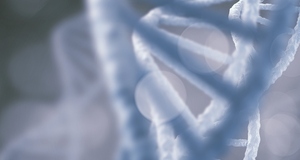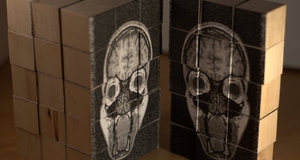The Psychopathology of Pica: Etiology, Assessment, and Treatment
By
2017, Vol. 9 No. 02 | pg. 2/2 | « ConclusionsAccording to the existing literature, pica is a mysterious disease, characterized by the consumption of non-food items, related to inconclusive etiologies, no existing assessment or established treatment procedures, and contains an expansive history. Pica being misused as a diagnosis is a frequent occurrence due to uncertainties of the disorder (Parry-Jones & Parry-Jones, 1992). Such misuses include disregarding the criteria for diagnosis. Due to recent changes in the DSM-V (2013), such as identifying pica as an eating disorder instead of a disorder characterized of infancy and early childhood, allows for the opportunity to properly identify pica in a clinical setting is now available. The prominent etiological theories related to pica include gastrointestinal distress, micronutrient deficiency, neurological disorder, and obsessive-compulsive spectrum disorder. The theories regarding gastrointestinal distress and obsessive-compulsive spectrum disorder appear to be similar due to both theories suggesting that pica occurs as a self-soothing mechanism in order to ease either physical or psychological discomfort (Herguner, Ozyildirim, &Tanidir, 2008; Kettaneh, et al., 2005; Young, et al., 2010; Mitchell, Laycock, & Stephens, 1977). The theory regarding neurological disorder suggests that physiological dysfunction of the brain influences an individual to engage in pica (Beecroft, Bach, Tunstall, & Howard, 1998). The micronutrient deficiency theory suggests that pica can be caused by an improper diet practiced over a period of time and choices regarding consumed items can have an impact on later eating behaviors (von Garnier, Stunitz, Decker, Battegay, & Zeller, 2008). These etiological theories are still inconclusive due to the limited completed research. Currently, there are no existing clinical guidelines in place for addressing pica assessment or treatment (Williams & McAdam, 2012). However, there are general recommendations in place for assessing, treating, and preventing pica (Williams & McAdam, 2012). Recommended assessment procedures include close observation of individual suspected to have pica, safe baiting procedures, and physiological examinations (Fisher et al., 1994). Pica assessment procedures do not typically involve interviewing individuals due to the high likelihood of the individuals not presenting truthful information (Young et al., 2010). Assessment procedures that rely on observation of pica events are indisputable and deception is less likely to occur. Recommended treatment procedures include creating an environment free of events that could trigger pica occurrences and overcorrection procedures (Piazza, et al., 1998; Ricciardi, et al., 2003). The more common procedures have involved behavioral treatments in order to combat a condition that is of behavioral nature. The recommended pica prevention measures include proper nutrition education and observation in order to prevent pica instances from becoming repeated behaviors.RecommendationsDue to the elusiveness of pica, appropriate assessment and treatment of the disorder are critical. In order for proper treatment of pica to occur, clinicians must be able to differentiate between pica, being the disorder, and pica-related behaviors, being behaviors that are derivatives of the disorder, but are often related to different disorders. The current literature does not differentiate between pica-related behaviors and pica. Pica-related behaviors are maladaptive behaviors that are typically stemmed from other conditions, such as obsessive-compulsive spectrum disorders (Herguner, Ozyildirim, & Tanidir, 2008). In order for any disease or disorder to be properly treated, the disease or disorder must first be properly defined. By defining pica and pica-related behaviors, the opportunity to understand the root of the behavior is better understood. For example, when the phrase “pica-related behaviors” is clearly defined, the suggestion that another disorder is prevalent with the behaviors that are similar to the disorder pica can be established. Pica is related to varying etiological theories. Such theories may recommend different methods in order to properly assess and address pica treatment. This is an element of clinical practice that a clinician must exercise with caution. For example, a clinician should not address pica if the etiology is believed to be of micronutrient deficiency theory origin with assessment and treatment measures more suitable to if the disorder was of neurological theory origin. Such a mismatch in treatment to assessment could either be inconsequential or detrimental to an individual’s health and well-being. Young (2010) noted that participants being untruthful to researchers regarding their pica occurrences. This is due to societal influences and pressures dictate that admittance to certain behaviors is unacceptable, which results in individuals suffering from pica to remain silent or deny the pica occurrences. In order to allow individuals to be able to seek treatment for their pica occurrences, clinicians must be able to foster an environment that promotes acceptance of pica and pica-related behaviors. Clinicians must be able to suspend a reaction to judge an individual’s behavior due to conflict with societal influences and work with an individual in order to establish a trusting relationship. By taking such action, an individual would be encouraged to discuss their pica occurrences. Future directions regarding pica research should include longitudinal studies in a population known for exhibiting pica. These future studies should be able to take into account the different aspects of the prominent etiological theories. A deficiency that is common to the previous studies regarding pica is the inability to describe how individuals with pica were before they began engaging in the behaviors. ReferencesAmerican Psychological Association. (2013). Diagnostic Statistical Manual of Mental Disorders: DSM-V. Washington D. C.: American Psychological Association. American Psychological Association. (2000). Diagnostic Statistical Manual of Mental Disorders: DSM-IV-TR. Washington D.C: American Psychological Association. Beecroft, N., Bach, L., Tunstall, N., & Howard, R. (1998). An unusual case of pica. International Journal of Geriatric Psychiatry, 13, 638-641. Bhatia, M. S., & Gupta, R. (2007). Pica responding to SSRI: An OCD spectrum disorder? World Journal of Biological Psychiatry, Ellis, C. R., & Pataki, C. (2012, April, 30). Pica. Medscape Reference. Retrieved from March 22, 2013 from http://emedicine.medscape.com/article/914765-overview#aw2aab6b5 Fisher, W. W., Piazza, C., Bowman, L. G., Kurtz, P. F., & Lachman, S. R. (1994). A preliminary evaluation of empirically derived consequences for the treatment of pica. Journal of Applied Behavioral Analysis, 26, 23-36. Herguner, S., Ozyildirim, I., & Tanidir, C. (2008). Is pica an eating disorder or an obsessive-compulsive spectrum disorder? Progress in Neuro-Psychopharmacology and Biological Psychiatry, 32(12), 2010-2011. doi: 10.1016/j.pnpbp.2008.09.011 Kettaneh, A., Eclache, V., Fain, O., Sontag, C., Uzan, M., Carbillon, L., Stirnemann, J., & Thomas, M. (2005). Pica and food craving in patients with iron-deficiency anemia: A case-control study in France. The American Journal of Medicine, 118, 185-188. doi: 10.1016/j.amjmed.2004.07.050 Matson, J. L., Belva, B., Hattier, M. A., & Matson, M. L. (2011). Pica in persons with developmental disabilities: Characteristics, diagnosis, and assessment. Research in Autism Spectrum Disorders 5, 1459-1464. doi: 10.1016/j.rasd.2011.02.006 Mitchell, D., Laycock, J. D., & Stephens, W. F. (1977). Motion sickness-induced pica in the rat. American Journal of Clinical Nutrition, 30, 147-150. Parry-Jones, B., & Parry-Jones, W. L. (1992). Pica: Symptom or eating disorder? A historical assessment. British Journal of Psychiatry, 160, 341-35. Piazza, C. C., Fisher, W. W., Hanley, G. P., LeBlanc, L. A., Wordsell, A., & Lindauer, S. (1998). Treatment of pica through multiple analyses of its reinforcing functions. Journal of Applied Behavioral Analysis, 31, 165-189. Ricciardi, J. N., Luiselli, J. K., Terrill, S., & Reardon, K. (2003). Alternative response training with contingent practice as intervention for pica in a school setting. Behavioral Interventions, 18, 219-226. Rose, E. A., Porcerelli, J. H., & Neale, A. V. (2000). Pica: Common but commonly missed. Journal of the American Board of Family Medicine, 13(5), 353-358. Von Garnier, C., Stunitz, H., Decker, M., Battegay, E., & Zeller, A. (2008). Pica and refractory iron deficiency anaemia: A case report. Journal of Medical Case Reports, 2, 324. doi: 10.1186/1752-1947-2-324 Williams, D. E., Kirkpatrick-Sanchez, S., Enzinna, C., Dunn, J., & Borden-Karasack, D. (2009). The clinical management and prevention of pica: A retrospective follow-up of 41 individuals with intellectual disabilities and pica. Journal of Applied Research in Intellectual Disabilities, 22(2), 210-215. doi: 10.1111/j.1468-3148.2008.00490.x Williams, D. E., & McAdam, D. (2012). Assessment, behavioral treatment, and prevention of pica: Clinical guidelines and recommendations for practitioners. Research in Developmental Disabilities, 33(6), 2050-2057. doi: 10.1016/j.ridd2012.04.001 Young, S. L., Khalfan, S. S., Farag, T. H., Kavle, J. A., Ali, S. M., Hajji, H., Rasmussen, K. M., Pelto, G. H. Tieslsch, J. M., & Stoltzfus, R. J. (2010). Association of pica with anemia and gastrointestinal distress among pregnant women in Zanzibar, Tanzania. The American Journal of Tropical Medicine and Hygiene, 83(1), 144-151. doi: 10.4269/ajtmh.2010.09-0442 Young, S. L. (2011). Craving Earth: Understanding Pica the Urge to Eat Clay, Starch, Ice, and Chalk. New York, New York: Columbia University Press. Suggested Reading from Inquiries Journal
Inquiries Journal provides undergraduate and graduate students around the world a platform for the wide dissemination of academic work over a range of core disciplines. Representing the work of students from hundreds of institutions around the globe, Inquiries Journal's large database of academic articles is completely free. Learn more | Blog | Submit Latest in Psychology |


















